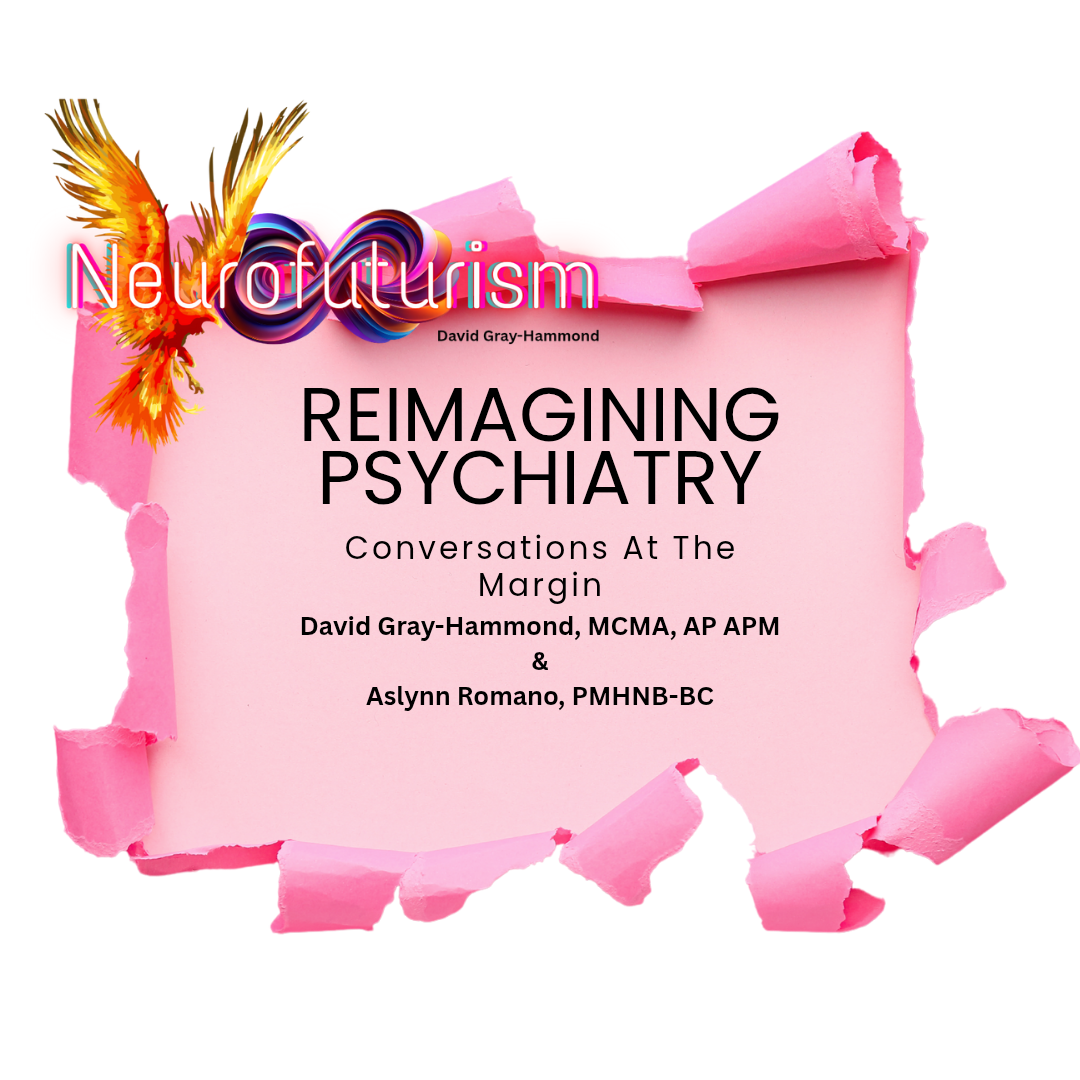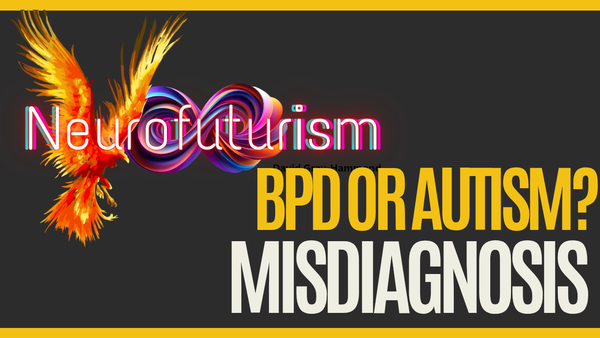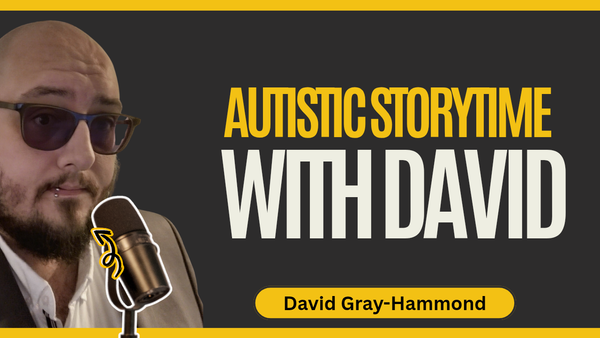Reimagining Psychiatry (Part 1): Between Madness and Meaning- A Conversation on Psychosis, Psychiatry, and Neurodiversity
A shared reckoning with madness, autonomy, and what it means to build something better.

This piece was born through conversation. What follows began as a private exchange between myself and Aslynn; two professionals with lived experience, exploring the intersections of psychosis, trauma, and the ethics of psychiatric care. What emerged was something more:
A shared reckoning with madness, autonomy, and what it means to build something better.
For more information on Aslynn's practice, click below.
The Origins of the Conversation
What began as a message about potential collaboration turned into a sprawling discussion on psychosis, both of our lived experiences, the systems we’ve worked in, and the frameworks we use to make sense of them.
I asked Aslynn about their experiences with psychosis, and they began by sharing what they’d seen through years of psychiatric practice, the hundreds of people they’d met, each experience unique and deeply human, yet framed by medicine in ways that often stripped it of its meaning.
Aslynn:
“I cannot tell you how many people I’ve met who have experienced psychosis and it looks as individual as the person themselves, despite big themes… I’ve helped treat that with medications and ECT. I’ve petitioned for involuntary commitment, even argued to strip someone of their autonomy.
I’ve always thought some people didn’t need treatment, they needed safe places to exist and prompts for self-care.”
They reflected on how their early psychiatric work conflicted with their evolving awareness of the Mad movement, how they’d come to see involuntary psychiatry as deeply traumatic even when it claimed to save lives.
“I’ve been horrified to realise how much of involuntary psych is just inflicting trauma, but still so proud of the life-saving outcomes I’ve provided. There’s ambivalence there.”
Shared Languages of Madness
Our dialogue became a meeting of worlds, mine grounded in lived psychosis and the neurodiversity paradigm, theirs in psychiatry and trauma work. I spoke about my own experiences of psychosis, particularly the existential nature of my delusions. Aslynn compared this to an episode triggered by medication. We were able to compare our experiences as someone who intrinsically experiences psychosis (myself) and someone who had theirs triggered by an outside influence (Aslynn).
Me:
“I had an episode where I was the only conscious being in a computer simulation, but someone was going to delete me. There’s always been an element of existential threat, a fear of obliteration that feels fundamental to my experience as an Autistic person.”
Aslynn resonated, recognising how their PTSD had shaped similar patterns of threat-perception.
Aslynn:
“My PTSD turned up the likelihood of threat in my brain. I was hypervigilant, which turned into paranoia with medication. Working with men in prison who had psychosis showed me how much delusions are connected to lived experience, and how often we underestimate the truth in them.”
This reflection, that delusions hold meaning and context, felt vital. For both of us, psychosis was not random malfunction but adaptive narrative, the mind trying to survive. For me this highlighted my view of psychosis as meaning-making in overdrive. A mind that is desperately trying to make sense of nonsensical suffering.
The Spiritual and Existential Layers
When I asked about the spiritual element in their experience, Aslynn described a kind of reluctant mysticism, hyper-religiosity intertwined with philosophical curiosity.
Aslynn:
“I’ve never been religious. But during psychosis I felt I’d tapped into something vast. Watching Fantastic Fungi made me think about mycelium as energy connecting us all. In the ambulance I wondered, is that God? Is that the fungus? It was so intense and so real.”
Me:
“That’s fascinating. I’ve often seen my own psychosis as revealing what I needed to know, showing me truths through terrifying metaphors. It’s chaotic but instructive.”
Psychosis, we agreed, can act as a teacher, albeit one that speaks in painful riddles.
Shame and the Professional Mask
We turned to shame; that quiet, corrosive residue left by both psychiatry and professionalism.
Me:
“For me, lived experience has only strengthened my practice. But when I feel shame, I ask whose shame it is, because it’s often internalised from outside actors.”
Aslynn:
“I had to feel through the shame somatically, over time. Psychiatry saved my life once, so I was biased toward it. But I’ve also seen how much trauma is woven through it.”
They described psychiatry as a deeply flawed tool, one that can save and destroy simultaneously.
“Abolishing psychiatry isn’t the answer, but it needs radical transformation.”
The Collision of Paradigms
I asked how they reconciled the neurodiversity paradigm with psychiatry’s medical model, a question that often defines my own work.
Aslynn:
“They’re two models crashing into each other. I agree more with the neurodiversity model, it has more truth. But I know psychiatry intimately, and I’ve seen involuntary ECT save a life. It’s hard to reconcile autonomy with that.”
Me:
“For me, involuntary psychiatry is an ethical dilemma. Its existence implies a normative standard, ‘your mind is too divergent to be in society.’ Even if it saves lives, it perpetuates systemic oppression.”
We both recognised that our systems create the crises they then punish. Aslynn had worked in prisons and psychiatric wards with people who’d killed or harmed others, and they saw that these acts were often born from structural violence.
Aslynn:
“Our system made them that way. My patients were at severe risk, yes, but there were no mid-acuity programs, no safe in-between spaces. It’s a terrible cycle.”
Reimagining Leadership and Care
In response, I proposed what I call temporary consensual leadership, a model that reframes psychiatric power:
Me:
“Psychiatry should take leadership of the journey to resolve distress, not ownership of the person. Leadership should be consensual, temporary, and collaborative, a companion through chaos, not a warden.”
“In the UK, psychosis and mania are often treated as nuisances, while personality disorders dominate inpatient care. When I was hospitalised, I was even accused of pretending to be psychotic. It struck me how profoundly psychiatry misunderstands authenticity.”
Aslynn:
“That’s maddening. I worked mostly with people who had killed or were at risk of doing so. But without mid-acuity programs, they just cycled between hospital and nothing. We treat crisis like a toggle; on or off, rather than a continuum.”
Towards Neurodivergent Competence in Crisis
Our conversation closed where it began: on the possibility of connection. Both of us hold space for contradiction that coercive systems can save lives, and still be wrong; that madness can be terrifying, and still be meaningful.
Psychosis, for us, is not the enemy.
Disconnection is.
We need systems built not on paternalism or pathology, but neurodivergent competence. Frameworks that honour autonomy, relational safety, and the capacity for people in altered states to participate in their own recovery.
Aslynn put it simply and quoted Gabor Maté:
“Safety isn’t the absence of threat, it’s the presence of connection.”
Closing Reflection
What began as a chat about collaboration became a map of paradox.
Two professionals, one psychiatric nurse, one Autistic wellbeing practitioner and academic, finding common ground in the in-between.
In a way, this conversation is the new model we both longed for: dialogical, relational, evolving.
A space where madness is not medicalised, and care is not control, but conversation.
If you’d like to read more about these ideas, including my work on lilipadding, neurodivergent competence, and the philosophy of the Chaotic Self, you can subscribe for more content!
Don't forget to subscribe and support this publication!
This Article Was Originally Published on DGH Neurodivergent Consultancy


